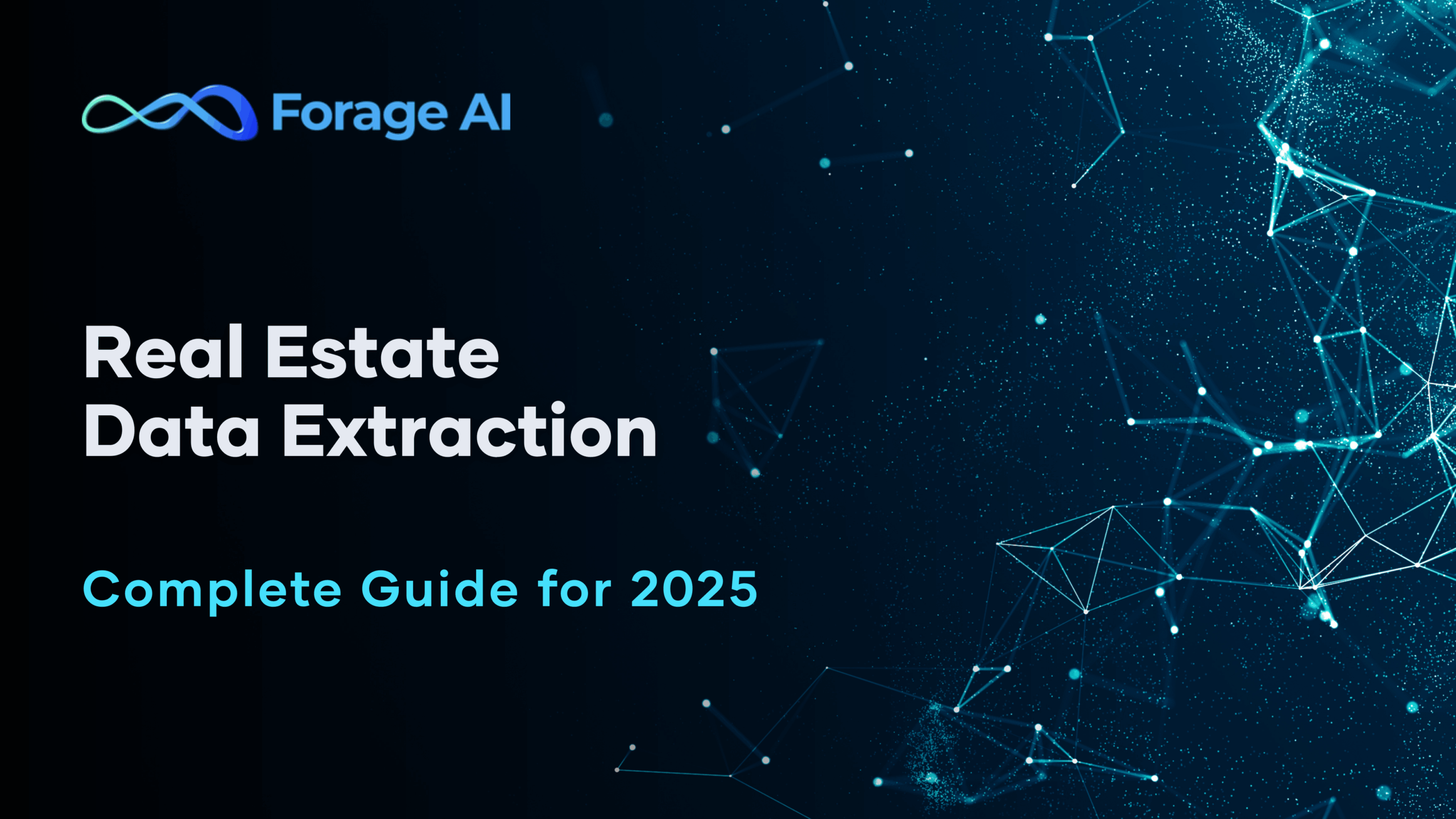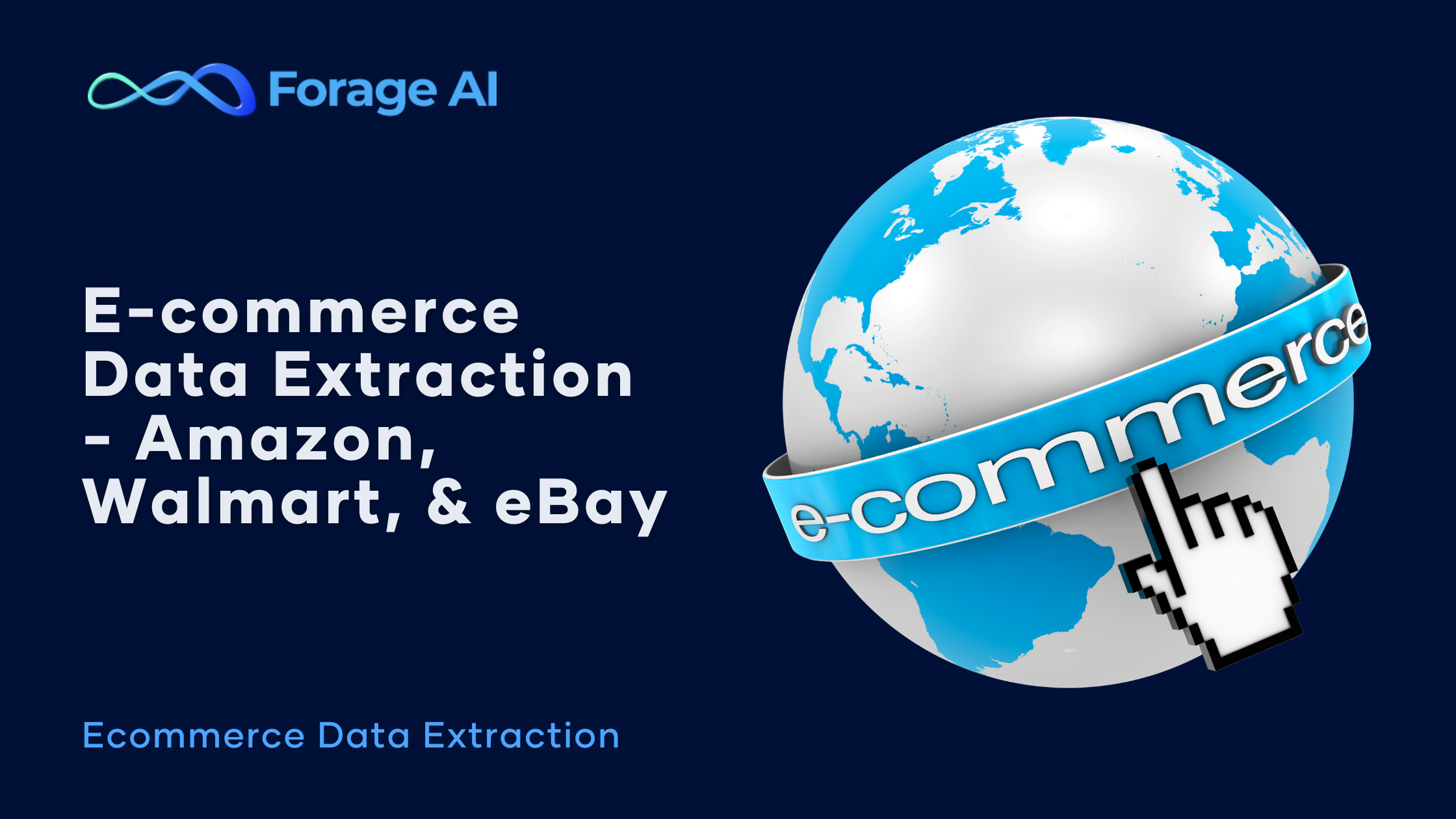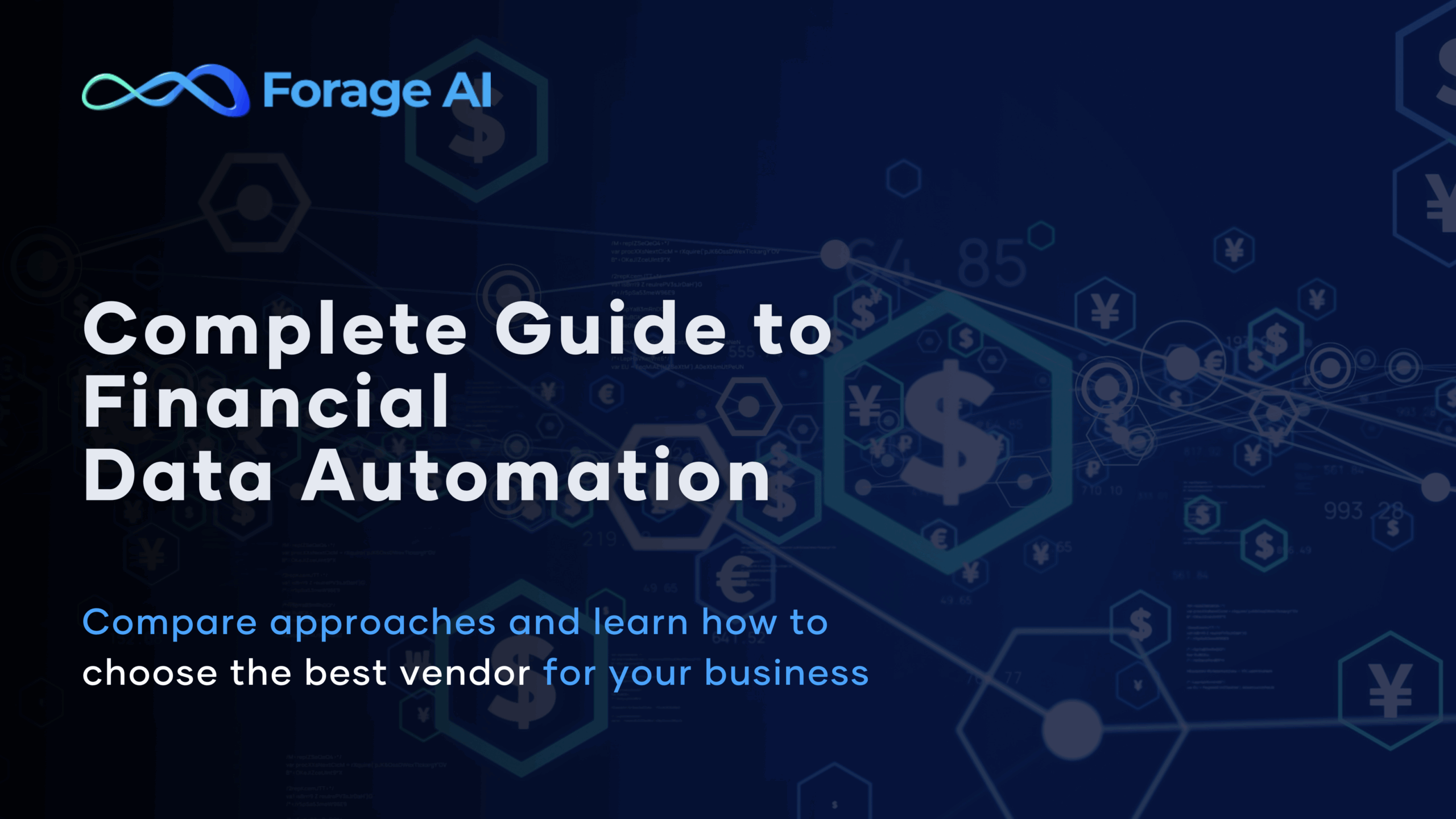Poor data quality costs companies an average of $15 million annually and can reduce potential revenue by up to 25% (Gartner). For real estate firms, this translates to missed deals and frustrated clients.
You face three choices for reliable real estate data:
- Build internal capabilities.
- Buy existing datasets.
- Partner with specialized extraction services.
The wrong choice costs money, time, and competitive advantage. This guide provides a clear framework for each approach and covers cutting-edge 2025 trends that could reshape your entire strategy.
Option 1: Building Internal Real Estate Data Extraction Capabilities
Internal development works when you already have technical resources and specific requirements. However, most firms underestimate the hidden costs that escalate over time.
When It Makes Sense
- Small, consistent scope – Tracking under 1,000 properties across stable MLS systems that rarely change layouts.
- Technical team already exists – Developers are available for ongoing maintenance and troubleshooting.
- Unique requirements – Custom fields, proprietary scoring, or integration with internal valuation models that standard datasets don’t provide.
The Reality Check
Most firms get caught off guard by three escalating challenges:
- Maintenance overhead grows exponentially –
- MLS systems and property websites update layouts quarterly.
- Each change breaks extraction scripts right when market conditions demand fresh data. Your team scrambles to fix them instead of building new features.
- MLS APIs also enforce strict rate limits, which slow you down when you need to gather large property datasets quickly.
- Scale costs jump unexpectedly –
- Processing thousands of listings simultaneously strains server resources.
- Property data from different sources rarely follows consistent schemas – one MLS uses “sqft” while another uses “square_footage,” requiring constant mapping and validation.
- Costs spike when you expand beyond initial geographic markets or property types.
- Technical complexity multiplies –
- Website anti-bot measures evolve faster than most internal teams can keep up with.
- Geocoding accuracy becomes critical when property addresses from different sources don’t match exactly, requiring sophisticated address standardization and validation systems.
- What starts as simple data extraction becomes an arms race with sophisticated blocking techniques.
Internal systems work well initially, but many require full rebuilds within a few years just to maintain current functionality as websites implement new security measures.
Option 2: Using Ready-Made Real Estate Datasets
Ready-made datasets offer the fastest path to reliable property information with predictable costs and professional maintenance.
Key Advantages
- Immediate access to clean data – providers handle extraction, cleaning, and standardization, delivering consistent property records without infrastructure investment.
- Predictable monthly costs – fixed expenses instead of unpredictable development budgets and emergency fixes.
- Professional maintenance included – providers handle website changes automatically, freeing your internal resources.
- Broad market coverage – multi-state property data without building dozens of individual MLS connections.
When Ready-Made Datasets Excel
Different business models benefit from standardized data approaches:
- Investment firms need consistent property data for comparative analysis across multiple metros without unique field customizations.
- Property managers expanding into new markets want reliable tenant screening and valuation data without dedicating months to regional builds.
- Financial institutions conducting portfolio analysis need standardized property valuations and market comparisons for risk assessment.
- Market researchers analyzing broad trends benefit from comprehensive datasets like those available at Forage AI’s Data Store, which provide immediate access to property records and market trends across major metros.
Understanding the Trade-offs
Ready-made datasets work great until you need something specific:
- Generic data fields –
- These datasets may miss luxury amenities, specific zoning details, historical renovation records, or other niche details crucial to your business model.
- Provider update schedules –
- Critical market changes might not appear in reports for days or weeks after they occur.
- Most providers update property records every 24-48 hours, which can miss rapid price changes or new listings in hot markets.
- Limited secondary market coverage –
- Providers focus on major metros, leaving smaller cities with sparse information.
- Integration complexity increases when combining multiple provider APIs, as each uses different authentication methods, data formats, and field naming conventions.
Option 3: Custom Commercial Property Data Extraction
Custom services handle complexity that breaks standard approaches, built for enterprise scale and unique requirements that ready-made solutions can’t match.
Business Advantages for Complex Requirements
- Tailored data collection –
- Extract exactly the property fields, market segments, and geographic areas that matter most to your operations.
- True enterprise scalability –
- Custom systems handle 250K+ properties simultaneously with processing power that scales with demand rather than hitting technical walls.
- They manage complex data reconciliation across several different property databases and MLS systems to reduce redundancy.
- Custom systems handle 250K+ properties simultaneously with processing power that scales with demand rather than hitting technical walls.
- Multi-layer data validation –
- AI-powered collection combined with technical verification and expert oversight ensures accuracy for high-stakes investment decisions.
- Property matching algorithms can identify the same property across different databases even when addresses, parcel IDs, or property descriptions don’t match exactly.
- Expert maintenance included – extraction professionals handle complex website changes, data quality issues, and compliance requirements while your team focuses on strategy.
When Custom Extraction Makes Sense
- Commercial real estate platforms managing 250,000+ properties need detailed specifications, lease information, and market comparables that don’t exist in standard datasets.
- PropTech companies building analytical tools require specific data combinations, such as zoning records merged with demographic information and historical sales patterns combined with renovation permits, that no ready-made dataset provides.
- Real estate investment funds analyzing acquisition targets need comprehensive due diligence data, including environmental records, permit histories, and detailed ownership structures from multiple government sources.
- Market research firms producing industry reports want proprietary data combinations that provide competitive advantages over firms using standard datasets.
Strategic Implementation Considerations
Custom extraction projects succeed when you understand the commitment:
- Setup periods –
- Expect 2-4 weeks for initial configuration and testing, rather than immediate data access, but this investment pays off through precisely targeted collection.
- Initial setup includes configuring data pipelines, establishing quality validation rules, and testing property matching algorithms across your specific data sources.
- Higher initial investment –
- Custom extraction costs more upfront but delivers exactly what you need, rather than paying for unused fields in standard packages.
- Partnership approach required –
- Successful projects need ongoing communication about evolving requirements rather than set-and-forget purchases.
- Successful projects need ongoing communication about evolving requirements rather than set-and-forget purchases.
While you’re weighing these three options, the landscape is changing rapidly. Understanding emerging trends helps you choose not just for today, but for where the market is heading.
2025 Trends Reshaping Real Estate Data Extraction
Three developments are creating competitive advantages for firms that adopt them early.
Autonomous Data Collection Systems
Agentic AI systems represent the biggest shift since APIs became standard. Unlike traditional scrapers that break when sites update, these autonomous agents understand content context and adjust dynamically.
Why this matters now: Property data flows continuously even through major interface redesigns. While competitors deal with broken extraction systems, your data keeps updating automatically. This trend particularly benefits custom extraction approaches that can integrate these systems seamlessly.
Smart Property Record Matching
AI-powered entity matching solves the duplicate property problem that costs firms millions in bad investment decisions. These systems identify the same property across multiple databases despite different addresses, names, or identifiers.
Business impact: Eliminates valuation errors from duplicate records and prevents duplicate marketing spend. Critical for firms managing large portfolios across multiple data sources, regardless of whether you build, buy, or partner for data extraction.
Real-Time Market Intelligence
Instant property price trends and valuation updates are becoming standard expectations. Modern extraction systems monitor pricing changes, new listings, and market shifts in real-time, rather than relying on weekly or monthly updates.
Competitive advantage: Speed to market often determines deal success, making real-time capabilities essential for competitive positioning.
These advances create new opportunities, but they also bring compliance challenges that can affect your choice of approach.
Data Compliance and Risk Considerations
Real estate data comes with regulatory headaches that can derail your project if you’re not careful.
Watch out for these compliance areas:
- Privacy laws like GDPR and CCPA – property data often includes personal information that triggers hefty fines
- State-by-state rules – each state has different property disclosure and licensing requirements
- Data security standards – property records need SOC 2 or PCI DSS certifications to avoid breach liability
Bottom line: Building internal systems means you handle all this legal complexity yourself. Professional providers like Forage AI can customize their approach to meet whatever compliance requirements you need.
Making the Strategic Choice
Be honest about your specific situation rather than following whatever approach seems most popular. The right choice depends on your actual needs and constraints.
Decision Framework Comparison
| Factor | Build Internal | Buy Existing Datasets | Custom Extraction |
| Best for | Under 1K properties, stable sources | 1K-10K properties, standard needs | 10K+ properties, complex requirements |
| Setup Time | 2-6 months development | Immediate to 1 week | 2-4 weeks configuration |
| Ongoing Maintenance | High (your team handles everything) | Low (provider managed) | Minimal (expert managed) |
| Scalability | Limited by your infrastructure | Provider-dependent | Enterprise-grade scaling |
| Data Customization | Complete control | Generic fields only | Fully tailored to your needs |
| Technical Team Required | Dedicated developers needed | Basic integration skills | No technical expertise required |
| Cost Structure | Low initial, high ongoing | Predictable monthly fees | Higher initial, lower ongoing |
| Compliance Handling | You handle all legal complexity | Provider compliance varies | Professional compliance included |
| Risk Level | High operational risk | Medium (provider dependent) | Low operational risk |
All three approaches can work under the right circumstances, but the technical and compliance realities we’ve outlined make the choice more critical than ever. Forage AI offers both ready-made datasets and custom extraction based on what you actually need. We’ve built the technical infrastructure to manage complex data reconciliation, compliance requirements, and scaling challenges so you don’t have to.
Use the decision framework above to evaluate your situation honestly. Then talk to our real estate data experts for recommendations tailored to your specific requirements and growth plans.




